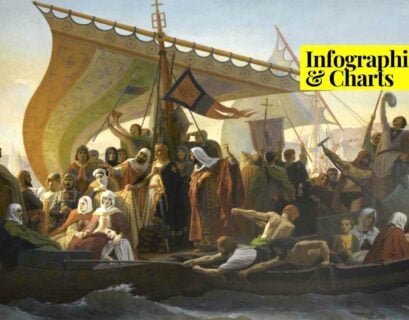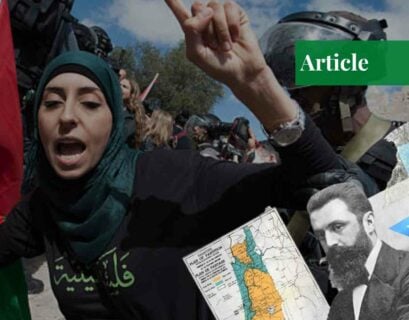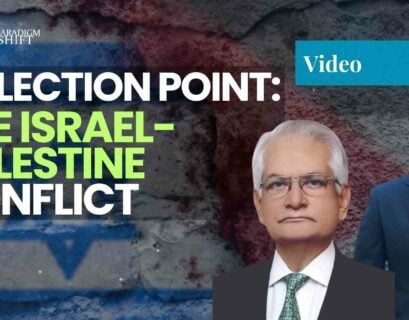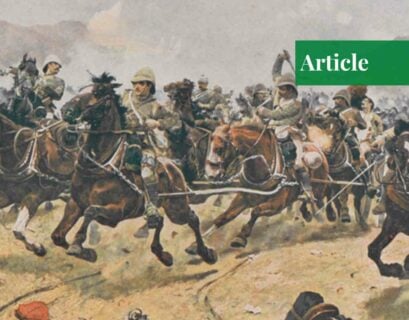Ms. Memoona Nasir is an international relations graduate from National Defense University, Islamabad. She is currently pursuing her MPhil in Peace and Conflict Studies at the Centre for International Peace and Stability (CIPS), NUST, Islamabad. As a student of peace and conflict studies, she possesses a strong passion for analyzing various peacekeeping strategies and delving into the intricate details of successful peacekeeping missions. Her coursework and research predominantly focus on international relations, geopolitics, conflict resolution, and the peacekeeping missions of the United Nations.
Introduction
Throughout human history, ethnic divisions have served as a potent catalyst for conflict, igniting animosity, and in extreme cases, genocide. These divisions emerge from the complexity of historical, social, economic, and political forces, culminating in the emergence of disparate ethnic identities and often pitting these groups against each other in bloody conflict. The consequences of such strife are catastrophic, with countless lives lost, populations displaced, and societies left with unforgettable scars.
The result of these ethnic divisions becomes a cause for inter-ethnic violence. The term ‘’inter-ethnic’’ violence refers to the conflict that occurs between different ethnic or racial groups. The differences in these groups are further fuelled by other factors such as political marginalization, socioeconomic stratification, and relative class deprivation. This type of conflict can take various forms from localized clashes to organized massacres and genocide.
Similar was the situation in one of the smallest countries on the African mainland, Rwanda, whose 1994 genocide is one of the darkest moments in the history of Africa. Rwanda’s genocide was one of the catastrophic events that led the world to witness the brutality of human violence at its peak and left a great impact on every human being (Ammar, 2023).
This paper explains how the complex relationship between ethnicity and conflict can lead to large-scale organized forms of violence. To elucidate this argument, it uses Rwanda’s genocide and highlights how the conflict was deeply rooted in historical, political, and socio-economic factors, with ethnicity acting as a catalyst for violence.
In the first part of the paper, the historical background of the major ethnic groups, Tutsi and Hutu involved in Rwanda’s genocide will be discussed. The second part will examine the relationship between ethnicity and conflict, which will be supported by Henri Tajfel’s social identity theory. In the third section, through various examples, it will be demonstrated how other factors such as socio-economic conditions and political elements along with ethnicity, provided a sense of deprivation among the Hutu community, compelling them to wage large-scale organized violence against the Tutsi.
The fourth section of the paper will ponder over the response of the international community to this event. It will then be concluded with how different factors fuelled by historical grievances can play a role in large-scale violence against a specific community.
Literature and Research
In one of the books written by Michael Barnett, ‘’Eyewitness to a Genocide: The United Nations and Rwanda’’ he states, “Far from descending from primordial roots, these two groups represent categories that have been socially constructed by a complex interplay of culture, politics, and economics” (Barnett, 2002, pp.50). Two major ethnic groups, the Tutsi and the Hutus, were involved in the Rwandan genocide of 1994. Historically, these terms have been used to describe distinct ethnic groups in the Central African Great Lakes Region, principally Rwanda, Burundi, and Uganda. However, Rwanda’s population of over 7 million constitutes these ethnic groups.
The Hutus and Tutsis share a common religion and cultural practices, yet, they are considered different ethnic groups (Human Rights Watch, 2006). Hutu account for almost 85% of the population of Rwanda while the remaining 15% is accounted for by the Tutsi ethnic group. The classification of these groups has been complex, throughout the ages. Hutus were primarily cultivators and regarded as the “masses” in contrast to the Tutsis, who were primarily herders and hence considered the “elite”(Gourevitch, 1998; Human Rights Watch, 2006).
The relationship between ethnicity and conflict in Rwanda is very complex in nature. It may seem that only ethnic identification was the sole cause of the conflict. The basis of ethnic conflict in Rwanda is not only just limited to the ethnic division in the society. The persecution has more to do with the social, economic, and political inequalities which have been further reinforced throughout history leading to chaos. Scholars suggest that “conflicts between ethnic groups often have material aspects, such as territory and political power, ethnic conflict itself stems from differences of identity: a dislike or even hatred that members of one ethnic group feel toward another group” (Mishali-Ram, 2006, pp. 585).
In the pre-colonial period, the Tutsi minority controlled political power and was viewed as superior to the Hutu majority, causing tensions and hostility between the two groups. In Rwanda, the colonial administration played a very significant role in strengthening these identities based on physical characteristics such as the color of the skin, height, and overall appearance (Faisal, 2022).
This narrow classification of the colonizers further solidified the distinction between Hutus and Tutsis, while giving more edge to the latter over the former in the administrative structure because they were seen as more ‘’European” in appearance as compared to the dark-skin-toned Hutus (Des Forges, 1999, pp.34). So, the Tutsis dominated the Hutus in everything and every walk of life, even being less in population, and believed that the Hutus should work for them and treated them as second-class citizens.
This kind of delusion sparked ethnic tensions between the two groups because the Hutus were not ready to compromise on this sort of sense of deprivation in the political and economic structure of Rwanda. With the ascension of the Tutsi monarch, Kigeri Rwabugiri, and the construction of a graded administration in Rwanda in 1860, the first traces of preferential treatment surfaced. This incident is said to have caused dissension within the group, keeping Hutu political participation at the bottom of the hierarchy, and favoring Tutsis at the top. This structure exacerbated existing tensions and paved the way for future wars.
A revolution from 1959 to 1962 resulted in national independence, with Hutu leaders taking control of the government. As the ruling government presented the Tutsi as a threat to Rwanda, many were slaughtered or forced to escape the nation (Maron, 2019). The attacks that were motivated by anti-Tutsi sentiment helped pave the way for the bloodbath that occurred 32 years later.
Social Identity Theory
This specific case can be evaluated via the social identity theory as proposed by Henri Tajfel, which provides a comprehensive insight into how group identities and intergroup dynamics contribute to the conflict. Social identity theory’s central tenet is that members of an in-group look for negative characteristics of an out-group to enhance their perception of themselves (Tajfel and Turner, 1979).
In Rwanda, the Hutu majority harbored unwarranted prejudices and animosity towards the Tutsi minority. These prejudices were stoked by propaganda and political diatribes that portrayed the Tutsis as a menace to the Hutus’ livelihoods, dominance, and social standing. This in-group partiality was instrumental in the depersonalization and marginalization of the Tutsis, paving the way for the heinous genocide.
Social identity theory highlights that intergroup conflict can emerge when there is a scramble for resources, authority, or perceived affronts to the ingroup’s identity or standing. In Rwanda, historical animosities and monetary imbalances between the Hutus and Tutsis provided a perfect breeding ground for intergroup strife. The persecution was kindled by the notion that the Tutsis constituted a menace to the Hutu identity, political prowess, and fiscal assets, resulting in a tidal wave of savagery and slaughter.
The period of genocide started with the assassination of Rwanda’s President Juvenal Habyarimana, when his plane was shot down on April 6, 1994, near Kigali, the capital of Rwanda (Faisal, 2022). His assassination led to the rapid escalations of a rift between the Hutu majority and the Tutsi minority. The hard-line Hutu rulers organized, commanded, and aided the methodical killing of Tutsis beginning in the capital (Douma, 2000).

The Rwandan massacre erupted like a volcano, snuffing out the lives of around 800,000 citizens in just a hundred days, leaving behind a nation shattered and scarred (Faisal, 2023). It’s worth noting that although the murder of President Habyarimana acted as the spark for the mass killings. The underlying reasons lay buried in a long-standing history of ethnic animosity, political wheeling and dealing, economic inequality, and a culture of lawlessness.
Factors that Contributed to Rwanda’s Genocide
Though, it may seem that the historical ethnic division and tensions were the only cause sparking Rwanda’s genocide but there were many underlying factors that also solidified these ethnic tensions. From the very start, it was clear that the Hutus felt deprived of all the resources in Rwanda and they considered the Tutsis a threat to their lives and resources. The role of colonizers in favoring the Tutsi minority group over the Hutu majority group further exacerbated these tensions. Even during the 1960s, there was an anti-Tutsi sentiment among the Hutu population; violent attacks were being carried out that made almost 400,000 Tutsis flee to neighboring countries like Uganda and Burundi (Maron,2009).
In a small nation with a reliance on agriculture and little productive land and the largest population in Africa, the consolidation of power in fewer hands was inexorably linked to access to land, resources, and opportunities (Alluri,2009). So, the humanitarian crisis in Rwanda can be attributed to the Hutus’ longstanding sense of relative deprivation in the political, social, and economic structure of Rwanda and their greed for more authority over resources. Whereas, ethnicity acted as the catalyst for violence in the interstate conflict.
Socio-Economic Factors
Socio-economic inequalities and discrimination played a significant role in escalating ethnic tensions between the majority Hutus and the minority Tutsis. Due to the complexities that the country had faced for a longer period, there was a scarcity of resources and limited land and job opportunities (Magnarella,2005). So, competition for the already scarce resources further fuelled animosity between the two ethnic groups.
The Hutu population of Rwanda desired more opportunities which fuelled more animosity in them against the Tutsi population. In one of the studies, it was mentioned that most of the working population in Rwanda during the late 1980s were subsistence farmers, and the government served as the largest employer in the country. At that time, the central government had around 7,000 employees, while local governments employed approximately 43,000 individuals. It is worth noting that Rwandan law stipulated that only 9 percent of these government employees could be Tutsi. Consequently, the intention of eliminating the Tutsi population would create an opportunity to fill an additional 4,500 government positions with Hutu individuals (Magnarella,2005).
Other than this, the Rwandan Civil War from 1990-92 also contributed to the further devastation of the economy. In the past, the perception of Tutsi economic dominance precipitated a sense of fear among the Hutu, who felt marginalized and excluded from economic opportunities. The quest for few resources exacerbated existing tensions and fostered competitiveness among ethnic groups. It can be said that other than the manipulation of ethnic identities, the underlying cause of genocide was the growing disparity among the people, scarcity of basic needs such as food or shelter, and fierce competition for land to farm.
Political Factors
Rwanda’s political scene was critical in the build-up of ethnic tensions that led to the genocide. Rwanda was one of those countries that experienced extreme political instability in the form of coup attempts, authoritarian rule, and conflicts, following its independence in 1962. After the independence, the political power passed between Hutu and Tutsi elites, fostering anger and dread in both communities (Bhavnani,2006). In 1990, the Tutsi-dominated Rwandan Patriotic Front (RPF) launched an armed uprising against the Hutu-dominated government.
The manipulation of ethnic identities for political gain played a major role in developing anti-Tutsi sentiments among the Hutu community. The political leaders and the extremist group played a central role in planning, organizing, and executing the mass killing of thousands of people (Newbury,1998). The Hutu Power movement led by extremist politicians – who believed in the Hutu superiority over the Tutsi in every domain of life – propagated an ideology that the Tutsis themselves are a threat to the nation. They used ethnic identity to mobilize support and incite violence against the Tutsis.
Political leaders and media outlets spread lies and hate speech to dehumanize Tutsis and justify violence against them. This manipulation of public perception contributed to the creation of a climate conducive to mass executions. Media outlets such as the newspaper “Kangura,” “Radio Rwanda,” and the 1993 “Radio-Télévision Libre des Mille Collines” (RTLM) became tools of mass propaganda. The Radio-Télévision Libre des Mille Collines (RTLM) was a major instigator in fuelling anti-Tutsi sentiments and efforts to eliminate them from Rwandan society (Messanga & Tajeugueu, 2021). The RTLM repeatedly referred to the Tutsis and the RPF as “cockroaches” in their broadcasts to dehumanize and degrade them.
In this regard, there was research done on a small village in Rwanda to determine the role of RTLM in fuelling hate towards the moderate Hutu and Tutsi groups in the state. The research suggests that the broadcast had a significant impact on participation in killings by both militia groups and ordinary citizens. As the radio station was the only mode of information in Rwanda, people easily believed what the radio station expressed. An estimated 51,000 perpetrators, or approximately 10% of the overall violence, can be attributed to the station (Yanagizawa-Drott, 2014). So, the extremist Hutu-led radio station RTLM was instrumental in disseminating anti-Tutsi propaganda and encouraging violence (Douma,2000; Hintjens,2014).

Political leaders and other powerful individuals exploited their positions to magnify hate speech and reinforce the narrative of racial hostility. Even after the plane was shot down, the RTLM continued its role as a facilitator of Rwanda’s genocide. During broadcasts, it provided the names of the targets and information on where they were hiding from the militias. According to the International Criminal Tribunal for Rwanda (ICTR), ‘’What RTLM did was to spread petrol through the country little by little, so that one day it would be to set fire to the whole country’’ (Hauschildt, 2014).
The inability of institutions, including the government and security services, to adequately address the rising violence was partly a result of institutional weakness. These underlining political issues, along with longstanding grudges and power struggles, helped to foster the conditions that allowed the genocide to take place.
Role of International Response in Rwanda’s Genocide
France and Belgium also played a significant role as instigators. Before the genocide, France maintained a sizable presence in Rwanda, supporting President Juvénal Habyarimana’s regime militarily and politically. Some claim that France’s backing of the Habyarimana dictatorship was a factor in the escalating racial tensions and the subsequent outbreak of violence.
The former colonial ruler of Rwanda, Belgium, came under fire for its part in the genocide. Critics contend that Rwanda’s escalating racial differences were a result of Belgium’s colonial policies, which favored the Tutsi minority. Belgium withdrew its peacekeeping personnel from Rwanda as the persecution started, which some see as a failure to uphold its obligation to safeguard Rwandan citizens. So, the international community was just protecting its own interest in Rwanda just to maintain its supremacy over others.
Other than France and Belgium, the role of the United Nations faced a lot of criticism in 1994 (Kundi, 2022). The international society’s response to Rwanda’s genocide is quite clear in the Security Council’s 1999 report. The report states, ‘’The international community didn’t prevent the genocide, nor did it stop the killing once the genocide had begun. This failure has left deep wounds within the Rwandan society, and in the relationship between the Rwandan and the international community, in particular the United Nations’’ (Security Council Report,1999, pp.3).
The report admits that the primary problem was a lack of resources and political development, as well as the presence of the United Nations. Furthermore, due to a shortage of finances, the United Nations Assistance Mission in Rwanda (UNAMIR) did not receive enough personnel to look after the security situation. The UNAMIR was established in 1993 to end Rwanda’s civil war but its failure to ease the tensions between the hostile groups resulted in the occurrence of genocide (UNAMIR, 1993). The failure of the UN in Rwanda was a horrific episode for the international community because peacekeepers saw the genocide happening in front of them. Following this, a proper investigation was conducted into this matter which is explained in detail in the 1999 Security Council report.
Conclusion
Rwanda’s genocide is marked as one of the tragic chapters in the books of history about human security. Almost 800,000 Tutsis were killed in just 100 days (Ammar, 2023). The imprint it left on the face of human history will last forever, reminding us about the severe cruelty. Apart from a long history of ethnic hostility, the Rwandan genocide was a multi-faced phenomenon. By studying this case one can understand the causes of a conflict and its catalysts and can prepare for proactive methods for conflict prevention. The case of Rwanda calls for international actors to come up with agreeable decisions and tools for conflict prevention to avert a humanitarian loss like this.
References
- Alluri, R. M. (2009). A history of conflict: The Rwandan civil war and genocide. In The Role of Tourism in Post-Conflict Peacebuilding in Rwanda (pp. 13–15). Swisspeace. http://www.jstor.org/stable/resrep11112.8
- Ammar, H. (2023, May 23). Paul Rusesabagina, Hotel Rwanda hero. Paradigm Shift. https://www.paradigmshift.com.pk/hotel-rwanda-hero/
- Bhavnani, R. (2006). Ethnic norms and interethnic violence: Accounting for mass participation in the Rwandan genocide. Journal of Peace Research, 43(6), 651–669. https://doi.org/10.1177/0022343306069290
- Douma, P. (2000). An overview of the Rwandan conflict. In The Netherlands and Rwanda: A case study on Dutch Foreign Policies and Interventions in the contemporary conflict history of Rwanda (pp. 17–34). Clingendael Institute. http://www.jstor.org/stable/resrep05427.6
- Faisal, I. (2022, October 24). The genocide in Rwanda explained through social identity theory. Paradigm Shift. https://www.paradigmshift.com.pk/genocide-in-rwanda/
- Faisal, I. (2023, May 3). Humanitarian intervention in an armed conflict. Paradigm Shift. https://www.paradigmshift.com.pk/conflict-humanitarian-intervention/
- Hintjens, H. M. (1999). Explaining the 1994 Genocide in Rwanda. The Journal of Modern African Studies, 37(2), 241–286. http://www.jstor.org/stable/161847
- Hauschildt, M. L. a. T. (2014, September 15). The media as a tool of war: Propaganda in the Rwandan genocide. Human Security Centre. http://www.hscentre.org/sub-saharan-africa/media-tool-war-propaganda-rwandan-genocide/
- Kundi, M. (2022, December 8). Peacekeeping missions of UN: History and current challenges. Paradigm Shift. https://www.paradigmshift.com.pk/peacekeeping-missions-of-un/
- Magnarella, P. J. (2005). The background and causes of the genocide in Rwanda. Journal of International Criminal Justice, 3(4), 801–822. https://doi.org/10.1093/jicj/mqi059
- Maron, J. (2019). “What led to the genocide against the Tutsi in Rwanda?” CMHR. https://humanrights.ca/story/what-led-genocide-against-tutsi-rwanda
- Messanga, G. A., & Tajeugueu, M. Y. D. (2021). The role of Radio-Télévision Libre Des Mille Collines in the Rwandan genocide : An analysis from the theoretical perspectives of intergroup threat and aggression. International Journal of Research and Innovation in Social Science, 05(09). https://doi.org/10.47772/ijriss.2021.5918
- Mishali-Ram, M. (2006). Ethnic diversity, issues, and international crisis dynamics, 1918-2002. Journal of Peace Research, 43(5), 583–600. http://www.jstor.org/stable/27640385
- Newbury, C. (1998). Ethnicity and the politics of history in Rwanda. Africa Today, 45(1), 7–24. http://www.jstor.org/stable/4187200
- Portela, L. P. (2021, October 29). A nation without ethnicity: the Rwandan reconciliation model – IWGIA – International Work Group for Indigenous Affairs. IWGIA – International Work Group for Indigenous Affairs. https://www.iwgia.org/en/news/4556-a-nation-without-ethnicity-the-rwandan-reconciliation-model.html.
- Secretary-General, U. (1999, December 16). Letter dated 15 December 1999 from the Secretary-General addressed to the President of the Security Council. United Nations Digital Library System. https://digitallibrary.un.org/record/405039#record-files-collapse-header
- The Rwandan Genocide. (2023, March 28). Human Rights Watch. https://www.hrw.org/report/2006/04/07/rwandan-genocide/how-it-was-prepared
- Turner, J. C., & Tajfel, H. (1986). The social identity theory of intergroup behavior. Psychology of intergroup relations.
- Yanagizawa-Drott, D. (2014). Propaganda and conflict: Evidence from the Rwandan genocide. Quarterly Journal of Economics, 129(4), 1947–1994. https://doi.org/10.1093/qje/qju020
If you want to submit your articles, research papers, and book reviews, please check the Submissions page.
The views and opinions expressed in this article/paper are the author’s own and do not necessarily reflect the editorial position of Paradigm Shift.



















